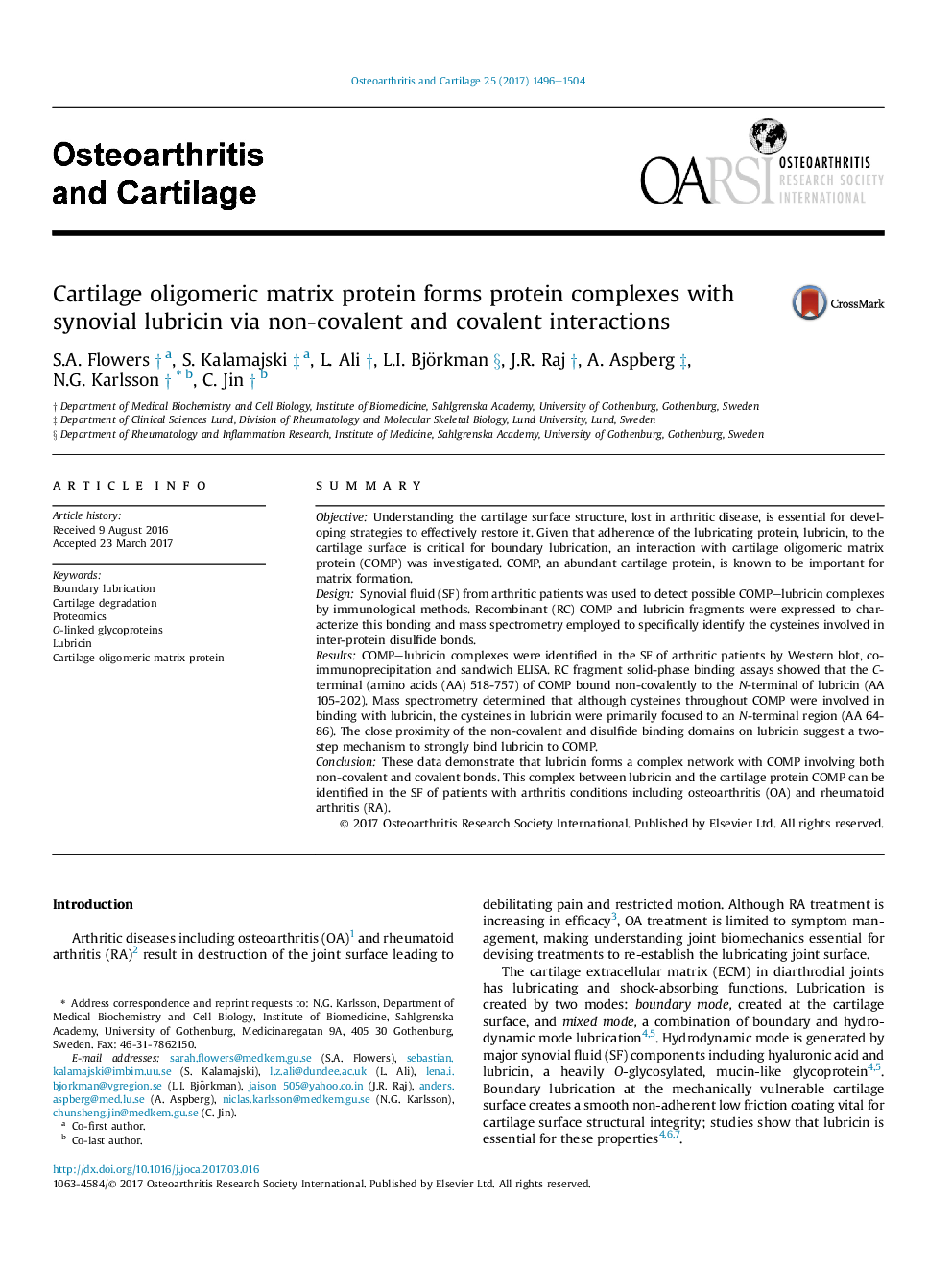| کد مقاله | کد نشریه | سال انتشار | مقاله انگلیسی | نسخه تمام متن |
|---|---|---|---|---|
| 5669246 | 1407953 | 2017 | 9 صفحه PDF | دانلود رایگان |

SummaryObjectiveUnderstanding the cartilage surface structure, lost in arthritic disease, is essential for developing strategies to effectively restore it. Given that adherence of the lubricating protein, lubricin, to the cartilage surface is critical for boundary lubrication, an interaction with cartilage oligomeric matrix protein (COMP) was investigated. COMP, an abundant cartilage protein, is known to be important for matrix formation.DesignSynovial fluid (SF) from arthritic patients was used to detect possible COMP-lubricin complexes by immunological methods. Recombinant (RC) COMP and lubricin fragments were expressed to characterize this bonding and mass spectrometry employed to specifically identify the cysteines involved in inter-protein disulfide bonds.ResultsCOMP-lubricin complexes were identified in the SF of arthritic patients by Western blot, co-immunoprecipitation and sandwich ELISA. RC fragment solid-phase binding assays showed that the C-terminal (amino acids (AA) 518-757) of COMP bound non-covalently to the N-terminal of lubricin (AA 105-202). Mass spectrometry determined that although cysteines throughout COMP were involved in binding with lubricin, the cysteines in lubricin were primarily focused to an N-terminal region (AA 64-86). The close proximity of the non-covalent and disulfide binding domains on lubricin suggest a two-step mechanism to strongly bind lubricin to COMP.ConclusionThese data demonstrate that lubricin forms a complex network with COMP involving both non-covalent and covalent bonds. This complex between lubricin and the cartilage protein COMP can be identified in the SF of patients with arthritis conditions including osteoarthritis (OA) and rheumatoid arthritis (RA).
Journal: Osteoarthritis and Cartilage - Volume 25, Issue 9, September 2017, Pages 1496-1504